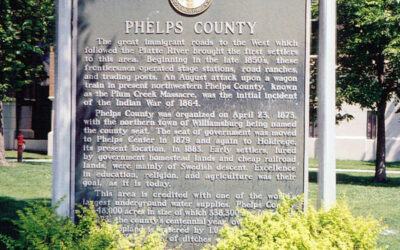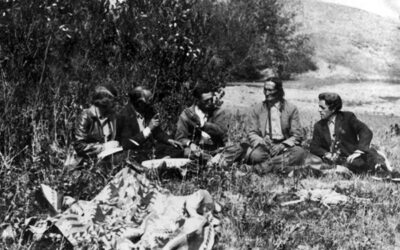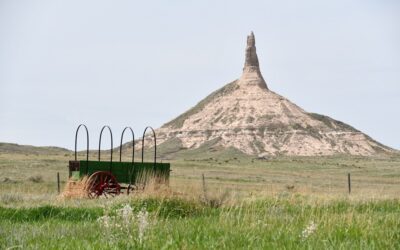HISTORY NEBRASKA MANUSCRIPT FINDING AID
RG3518.AM: Fenner Ferguson, 1814-1859
Papers: 1833-1859
Bellevue, Douglas County, Neb.: U.S. Representative; Nebraska Supreme Court Justice
Size: 1 box; 0.5 cu.ft.
BACKGROUND NOTE
Fenner Ferguson was born in Nassau, Rensselaer County, New York, in 1814. He was the son of Stephen Ferguson, whose birth antedated the Revolutionary War. He was reared on his father’s farm and acquired a common school and academic education subsequently reading law in the office of Coon & Branhall, at Albany, New York. He was admitted to the bar in New York by Chief Justice Nelson, in 1840. After his admission to the bar, the firm became Coon, Branhall, and Ferguson. He enjoyed a considerable practice in Albany and surrounding counties, as well as in New York City, and represented the Patroon Colonial Land Grant under one of the Georges.
In 1844, on account of ill health, he removed to Albion, Michigan. The trip was made partly by the Erie Canal and the remainder over land. He met with marked success in his practice in Michigan, and during the ten years of his residence in that state he served successively as master in chancery, district attorney, and a member of the state legislature.
On October 12, 1854, President Pierce appointed Ferguson first chief justice of the supreme court of the territory of Nebraska, under the provision of the act of Congress approved May 30 of that year. He at once moved with his family to Bellevue, Nebraska, where he resided until his death. He organized the first district and supreme courts of Nebraska, and assisted the first territorial legislature in drafting the first code of laws enacted for the government of the territory. After three years of service as chief justice he resigned, having been elected, August 3, 1857, delegate to Congress from the territory. Ferguson was sworn in on December 7, 1857, and served until March 3, 1859. It was upon his return from Washington in the fall of 1859 that he was stricken by illness, which resulted in his death on October 11, 1859. He was buried at Bellevue, Nebraska.
On November 3, 1841, Fenner Ferguson was married at Rochester, New York, to Helena E. Upjohn, who survived him nearly thirty years, dying in 1888. Her remains lie beside those of her husband at the Bellevue Cemetery in Bellevue, Nebraska. She was the daughter of William Upjohn, who in early life was a civil engineer in Shaftesbury, England, but who immigrated to New York in 1830 when she was a child. Mrs. Ferguson bore four children: Arthur N., Alfred G., Stephen W. and Charles F.
SCOPE AND CONTENT NOTE
This collection consists of four folders of manuscript material arranged in four series: 1) Biographical material; 2) U.S. House of Representatives; 3) Certificates and 4) Miscellany. The bulk of this material relates to Ferguson’s career as a delegate to the U.S. House of Representatives in 1857. Also included are certificates concerning his legal career and biographical material.
Note: See the Nebraska History index for various articles about Fenner Ferguson.
INVENTORY
Series 1 – Biographical Material
Box 1
Folder
- A biographical sketch of Fenner Ferguson by A.E. Sheldon
Series 2 – U.S. House of Representatives
- Bills introduced into the House by Ferguson. A chart of the seating of the 35th Congress. Calling cards of prominent legislators of the day.
Series 3 – Certificates
- Bellevue Land Claim Association Stock Certificate signed by Peter Sarpy
Certificate to practice before the U.S. Supreme Court
Certificate to practice before the N.Y. Supreme Court
Certificate to practice as counselor before the N.Y. Supreme Court
Quit claim deed, 1856
Series 4 – Miscellany
- Broadside paper proclaiming Ferguson’s appointment as delegate to the U.S. House of Representatives (see OB082)
Subject headings:
Ferguson, Fenner, 1814-1859
Legislators — United States
Nebraska — Politics and government
Politics — Nebraska
United States. Congress. House of Representatives, 1857-1859
DDS/kj 01-23-1970
Encoded TMM 04-01-2010



